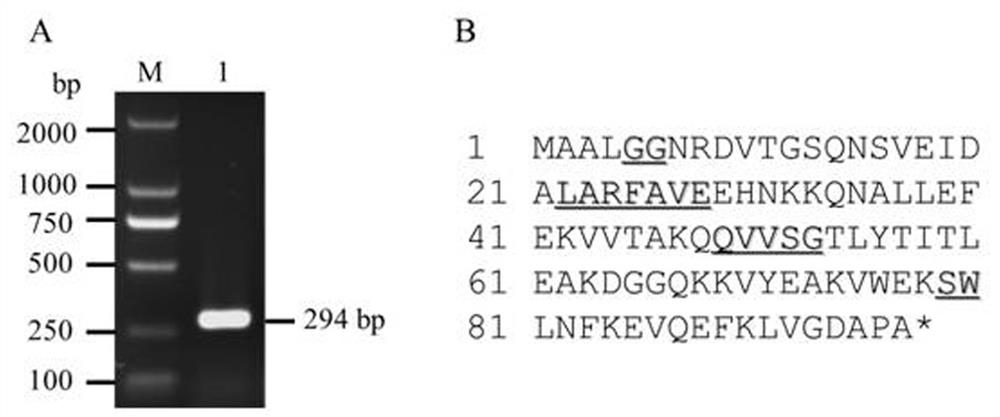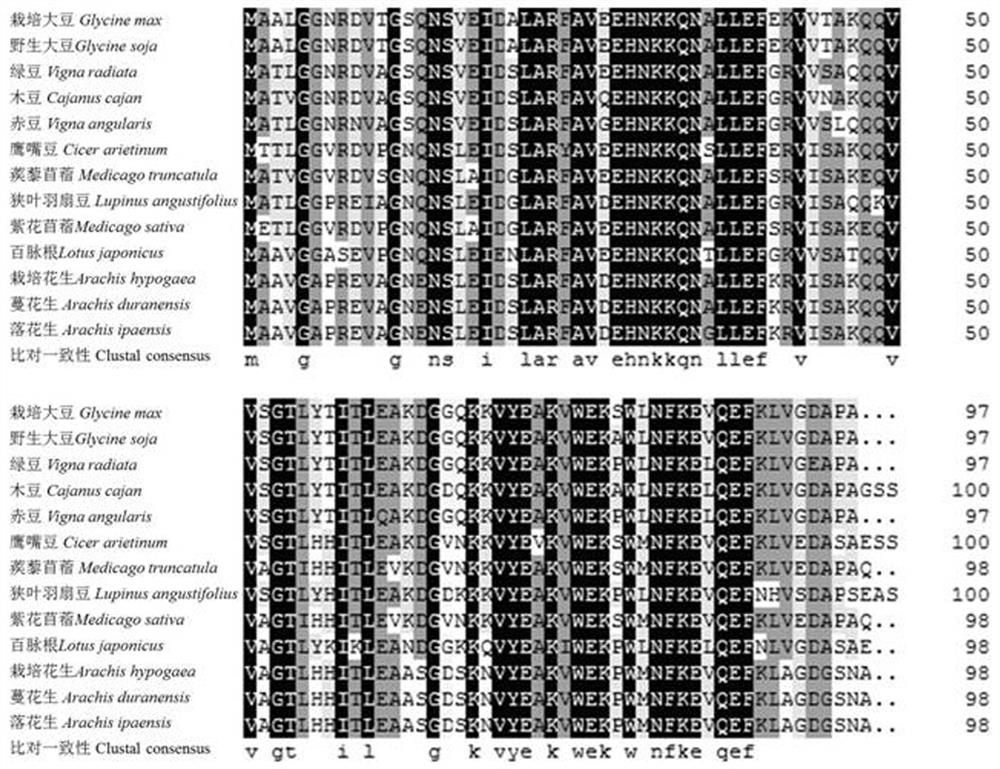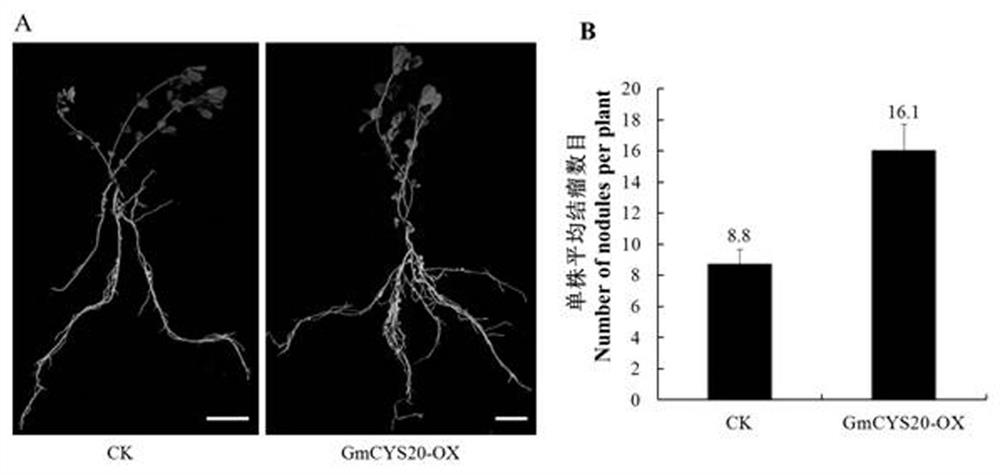Soybean gmcys20 gene and its application
A technology of genes and leguminous plants, applied in the fields of application, genetic engineering, plant genetic improvement, etc., to achieve the effect of increasing the number, strengthening the nitrogen fixation ability, and increasing fertility
- Summary
- Abstract
- Description
- Claims
- Application Information
AI Technical Summary
Problems solved by technology
Method used
Image
Examples
Embodiment 1
[0031] A method for preparing a cysteine protease inhibitor gene GmCYS20 involved in legume symbiotic nodulation, the steps of which are:
[0032] After surface sterilization of W82 soybean seeds, spread them on sterile wet filter paper with the hilum facing down, and cultivate them in the dark at 28°C until they germinate. Fresh soybean root tip tissues were collected and quick-frozen in liquid nitrogen. According to the instructions of the RNA extraction kit (Invitrogen, USA), the total RNA of soybean root tip tissue was extracted. The first strand of cDNA was obtained according to the instructions of the reverse transcription kit of TIANGEN Company. According to the soybean GmCYS20 gene (Glyma.20g045500) sequence published on https: / / www.soybase.org / search / website, primers F-GmCYS20 and R-GmCYS20 (Table 1) were designed to amplify the GmCYS20 target gene by PCR (attached figure 1 shown). The target fragment was recovered, connected to the T vector, and sent to Nanjing...
Embodiment 2
[0038] A kind of application of the GmCYS20 gene involved in regulating the symbiotic nodulation of legumes in regulating the number of root nodules of legumes (Lotus japonicus, milk vetch, alfalfa, soybean and peanut, etc.), the steps are:
[0039] In order to study the biological function of GmCYS20 in the leguminous plant Lotus japonicus, the present invention explores the biological function of GmCYS20 through the method of overexpression (attached image 3 shown). It mainly involves the construction and genetic transformation of the overexpression vector, and the specific implementation steps are as follows:
[0040] Construction of the overexpression fusion vector: design primers F-OX and R-OX (see Table 1) that introduce restriction sites EcoR I and Sma I, and insert the sequenced correct target gene into the plant expression vector p1302G (Gus gene as a screening marker Gene), construct the p1302G-GmCYS20 recombinant plasmid, and transfer it into Agrobacterium rhizoge...
Embodiment 3
[0067] Embodiment 3 is basically the same as Embodiment 2, the difference is that
[0068] In concrete implementation step (1), plant material cultivation is to germinate alfalfa 5 days in advance respectively; In step (7), rhizobium inoculation is alfalfa Rhizobium Sinorhizobium meliloti 1021 (this bacterial strain is the bacterial strain that has announced in the world, Juan etc., Comparison of Developmental and Stress-Induced Nodule Senescence in Medicagot runcatula. Plant Physiol, 152:1574-1584, 2010).
PUM
 Login to View More
Login to View More Abstract
Description
Claims
Application Information
 Login to View More
Login to View More - R&D
- Intellectual Property
- Life Sciences
- Materials
- Tech Scout
- Unparalleled Data Quality
- Higher Quality Content
- 60% Fewer Hallucinations
Browse by: Latest US Patents, China's latest patents, Technical Efficacy Thesaurus, Application Domain, Technology Topic, Popular Technical Reports.
© 2025 PatSnap. All rights reserved.Legal|Privacy policy|Modern Slavery Act Transparency Statement|Sitemap|About US| Contact US: help@patsnap.com



